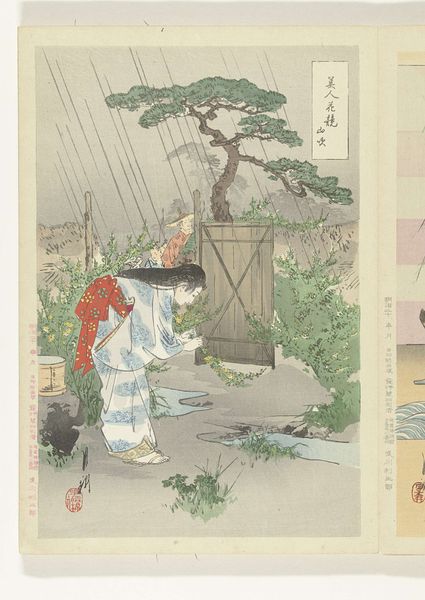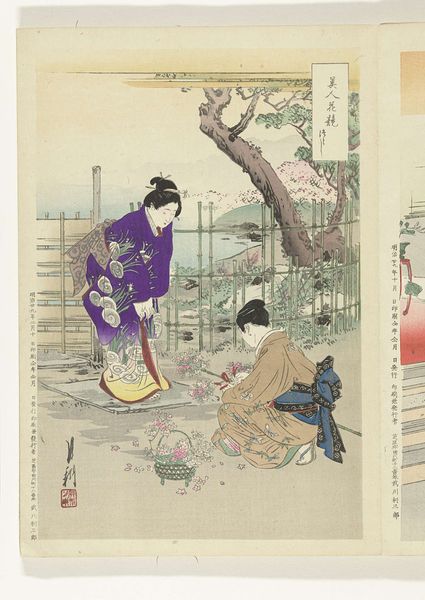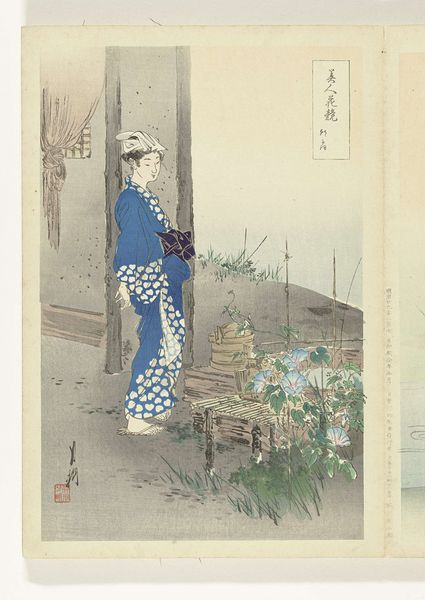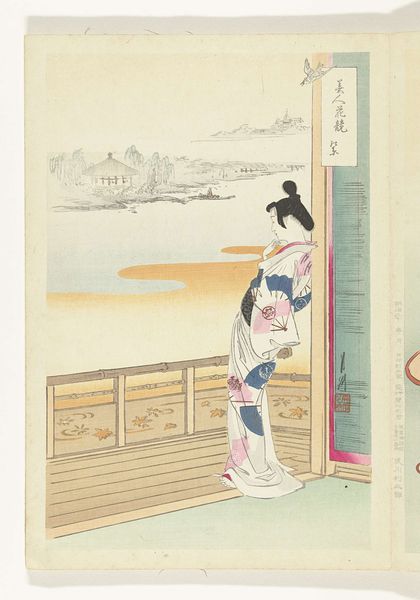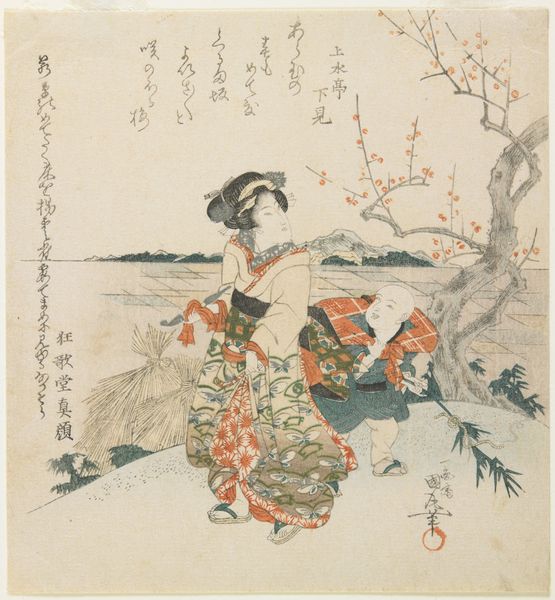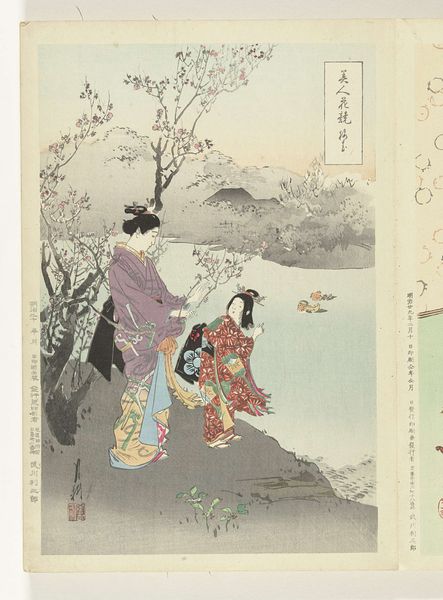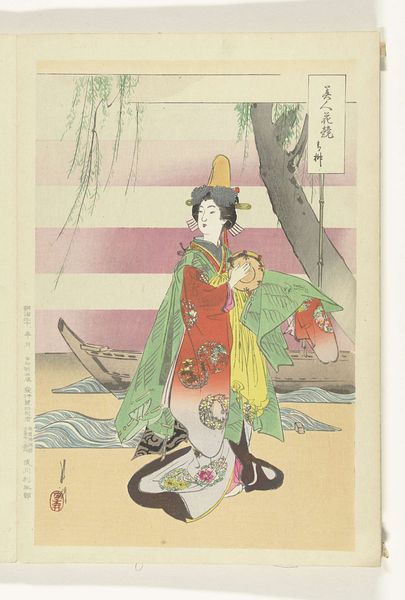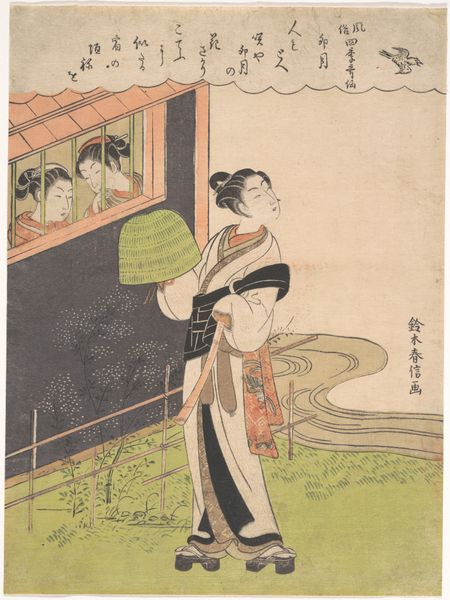
Dimensions: height 350 mm, width 238 mm
Copyright: Rijks Museum: Open Domain
Ogata Gekko created this color woodblock print, Iristuin, in Japan during the Meiji period. The Meiji era marked a shift in Japanese art. Artists like Gekko navigated between traditional techniques and emerging Western influences. Here, a woman in a light kimono walks across a narrow bridge which cuts through a field of irises. Her calm expression and elegant posture reflect an idealized version of femininity, deeply embedded in the cultural norms of the time. The woman's connection to nature suggests a harmonious relationship with the environment, yet one cannot ignore the socio-political context that shaped such imagery. The print reflects both a celebration of Japanese identity and a subtle negotiation with Western expectations of Japanese culture. While this work seems to maintain traditional representations, it also invites viewers to consider the complex interplay between identity, nature, and cultural expectations. The artist invites us to reflect on how these narratives shape both personal experiences and broader societal issues.
Comments
No comments
Be the first to comment and join the conversation on the ultimate creative platform.
